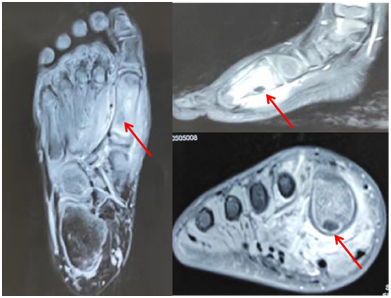Why is the molecular detection of non -small cell lung cancer so important?This article tells you ...
Author:Cancer Channel of the Medical Time:2022.07.03
*For medical professionals for reading reference

One text is clear, come to collect!
Lung cancer is the number one cancer in China's incidence and mortality. With the development of precision medicine, lung cancer targeted therapy has achieved fruitful results, and various new drugs and new progress have emerged endlessly, bringing more choices to clinical diagnosis and treatment. In addition to the classic mutations of EGFR, EGFR20 outer appetite insertion mutations (EGFR EXON20Ins), MET, ALK, KRAS and other rare or rare target studies have also made breakthroughs, bringing hope for patients to survive for a long time. In addition, the emergence of immunotherapy provides new treatment options for patients with no genetic positive, bringing the gospel to more patients.
Precision treatment, testing first -this concept has been recommended and recognized by major guidelines at home and abroad, but why is molecular detection so important? How to choose the most appropriate detection method and other questions for different targets still have certain questions for clinical tumor doctors. Therefore, this article explains the importance of non -small cell lung cancer (NSCLC) molecular detection and the detection method and means of some specific targets to readers.
Early NSCLC
From the comprehensive consideration of existing evidence-based medical evidence as well as availability and economy, economy and other factors, the early NSCLC new assisted treatment stage does not require molecular and PD-L1 testing. If the tumor is ≥4cm or N+, it is recommended to accept it. Double platinum chemotherapy combined with Nawuli Ulitabi treatment, and does not consider the expression of PD-L1.
The early NSCLC auxiliary treatment phase is surgical resection, and the molecular and PD-L1 detection are recommended. EGFR mutant positive NSCLC recommended acceptance/non-receiving platinum-containing chemotherapy before receiving Olkinib treatment. This treatment is recommended based on the results of the phase III clinical trial ADAURA study. The results show that Oshitinib assisted therapy can bring significant benefits to Phase IIIA EGFR mutant-positive patients. , Significantly reduced the risk of 80%[1]. Based on the significant benefit of ADAURA research, Oshitininib auxiliary treatment indications have also been approved by the China National Drug Administration (NMPA) and the US Food and Drug Administration (FDA).
PD-L1 immune group (IHC) ≥1%phase IIIA NSCLC is recommended to be treated after platinum-containing chemotherapy, which is recommended based on the results of IMPOWER010 research. The results show that among the NSCLC population in the phase III-ⅢA, different PD-L1 expression levels (SP263 IHC detection) have different DFS benefits: HR with tumor cells (TC) ≥50%of people is 0.43 (95%CI 0.27) -0.68); TC ≥1%of people HR is 0.66 (95%CI 0.49-0.87); TC <1%does not have significant benefits [2].
Late NSCLC-targeted therapy
In recent years, the detection of biomarkers used to determine the best first -line targeted therapy has increased the survival rate of advanced NSCLC. The current targets for therapeutic are: EGFR classic mutations (DEL19 or L858R) and Sitama mutations (EGFR Exon20ins, S768L, L861Q , G719X), ALK, ROS1, Braf V600E, NRTK, RET, KRAS G12C, and Met 14 outer appearance jumping mutations.
EGFR and ALK, as common targets, are currently mature detection methods and treatment plans. The lower frequency of mutation is less than 1%of lung cancer -driven genes. Whether in terms of testing or treatment, it often takes longer and lacks standardization than common targets.
Taking the Met 14 external jumping mutation as an example, although it can be found at the DNA level, the reliability of the domestic genetic testing platform has room for further improvement. At present Gene test results. At the same time, the recognition of new targets such as Met 14 Xianzi jumping mutations still requires accumulating experience, which also causes clinicians to check the alkali base one by one when interpreting the MET gene test results, and sometimes even multiple doctors to confirm.
The advanced NSCLC gene test is mainly divided into traditional organizational biopsy and gradually emerging liquid biopsy. The selection of detection methods is also different. At present, there are mainly IHC detection, FISH detection, DNA second -generation sequencing (NGS), and RNA NGS. Different detection methods also have their own advantages and disadvantages. IHC testing and FISH detection can cause false alarm and false negatives, thereby misunderstanding the results of gene testing. The advantage of DNA NGS is that it can obtain multiple mutation information at the same time. The disadvantage is that due to the repeated sequence, the coverage rate of some internal sub -regions is low, resulting in a reduced sensitivity. RNA NGS can be used as a supplement to DNA NGS, obtaining fusion partnership information, no inner container coverage, and can directly evaluate the integration and expression.
For the same target, different detection methods are also different. Taking EGFR EXON20INS as an example, compared with NGS, the PCR detection method is not diagnosed, which is easy to cause missed diagnosis, so that patients cannot accurately obtain medication information.
As mentioned earlier, liquid biopsy is a rapid development method in recent years. It has the advantages of invasiveness, real -time dynamic monitoring, overcoming the heterogeneity of tumor, and providing comprehensive testing information. At present, there are several opportunities for the use of liquid biopsy: when the organizational biopsy is not sufficient or no organizational biopsy can be performed, the liquid biopsy can be performed. Carry out CFDNA (Cell Free DNA, Cell Visit DNA) test to determine tumor tissue suitable for genetic typing; as a supplementary method to improve the detection rate of biomarkers; test -resistant detection. Accurate diagnosis is essential, and the corresponding drugs are more important. In the field of lung cancer, Met No. 14 outer appende jump mutations are currently NMPA approved drugs include Savidib, FDA approved drugs include CAPMATINIB and TEPOTINIB; BRAF V600E mutations have been approved by NMPA and Temotinib; and many more. At present, many rare targets are available for medicine, and more research drugs are constantly being promoted.
Late NSCLC-immunotherapy
Patients who drive gene-negative NSCLC are recommended for PD-L1 expression level detection, and determine the treatment method based on the level of expression. PD-L1 ≥50%advanced NSCLC patients can receive PD-(L) 1 inhibitors single drug or combined chemotherapy; PD-L1 1%-49%patients are recommended to receive PD-(L) 1 inhibitors combined with chemotherapy , PD-1 inhibitor combined with CTLA-4 inhibitors ± chemotherapy; PD-L1 <1%of patients are recommended to receive PD-(L) 1 inhibitors combined with chemotherapy, PD-1 inhibitors, CTLA-4 inhibitors combined with chemotherapy therapy Essence
At present, it is the "molecular revolution" of lung cancer treatment. More and more patients with lung cancer have obtained longer survival through targeted and immune therapy. Entering the era of targeted and immunotherapy, each patient with lung cancer should be guided by molecular and PD-L1 testing. The molecular genetic of lung cancer has more in -depth awareness and transforming it into clinical treatment decisions is still the hotspot and focus of lung cancer treatment. We look forward to more accurate and more individualized lung cancer treatment in the future.
references:
[1] WU YL, TSUBOI M, He J, Et Al. Osimertinib in ResectedDegfr-Mutated Non-Cell LUNG CANCER. N English J Med. 2020; 383 (18): 1711-1723.
[2]Felip E, Altorki N, Zhou C,et al. Adjuvant atezolizumab after adjuvant chemotherapy in resected stage IB-IIIA non-small-cell lung cancer (IMpower010): a randomised, multicentre, open-label, phase 3 trial. Lancet. 2021; 398 (10308): 1344-1357.
*This article is only used to provide scientific information to medical people, and does not represent the viewpoint of this platform


- END -
The child shouted in pain as soon as he arrived at night, the truth of "growing pain" was bone -like bone tumor.

Wuhan Evening News June 22 The child shouted in pain as soon as he arrived at nigh...
2022 Epidemic Prevention concerns | National Health and Health Commission: The number of new local infections in the country has dropped to less than 40 cases

Press conference on the press conference of the State Council.Xinhua News Agency r...